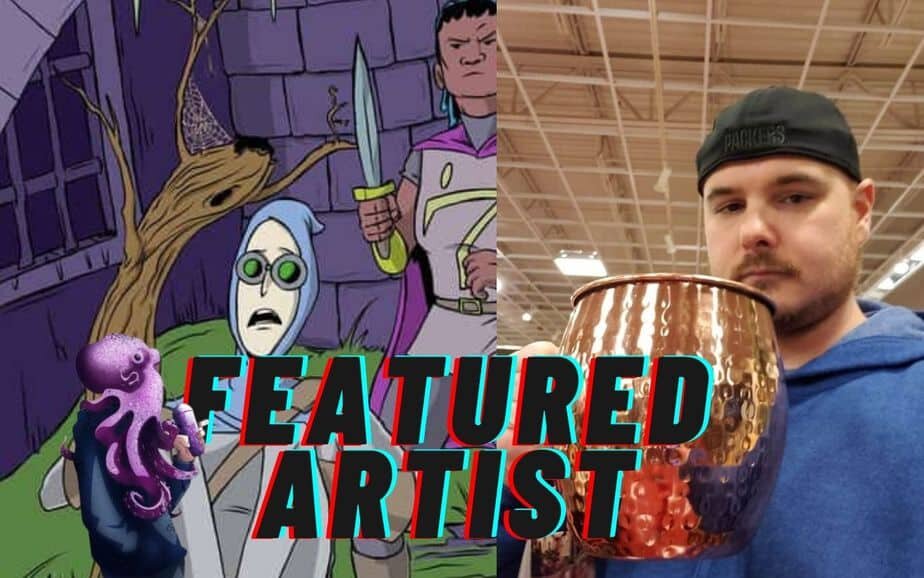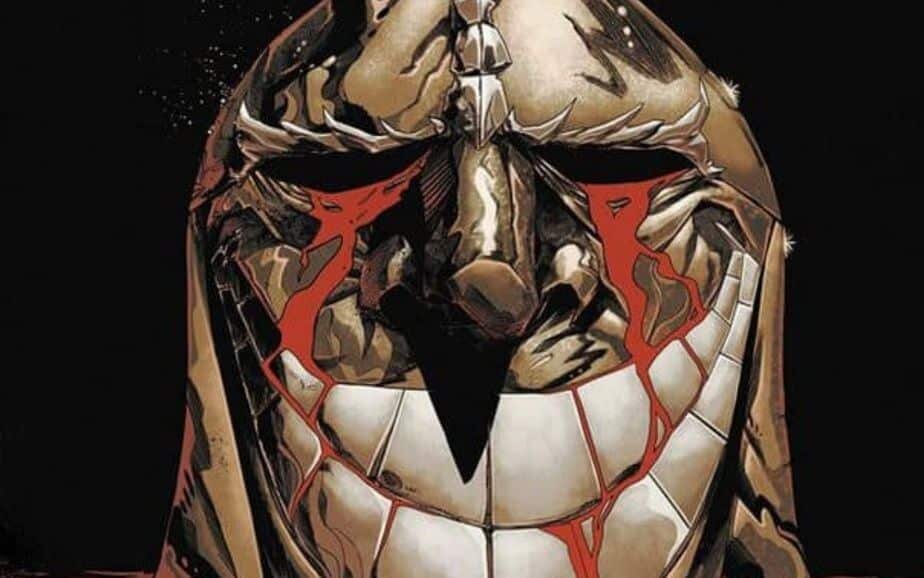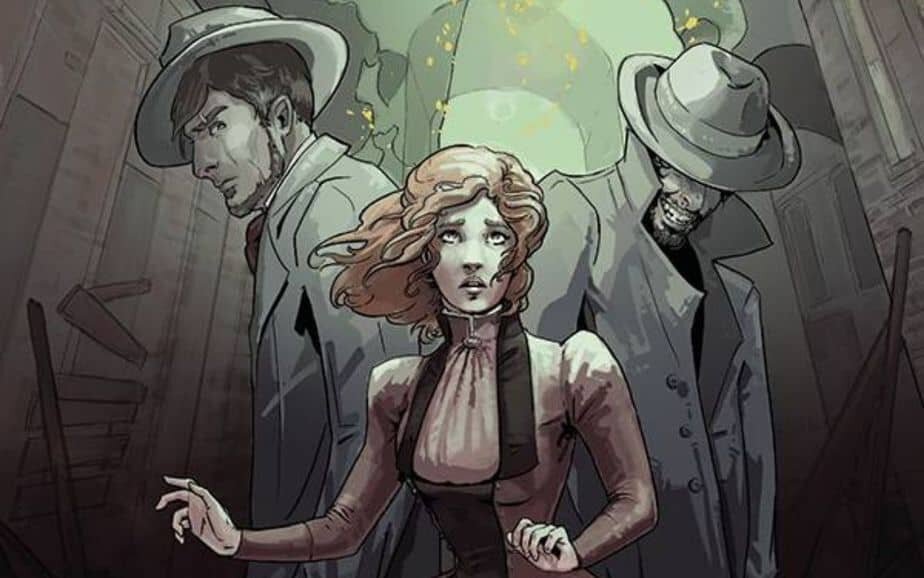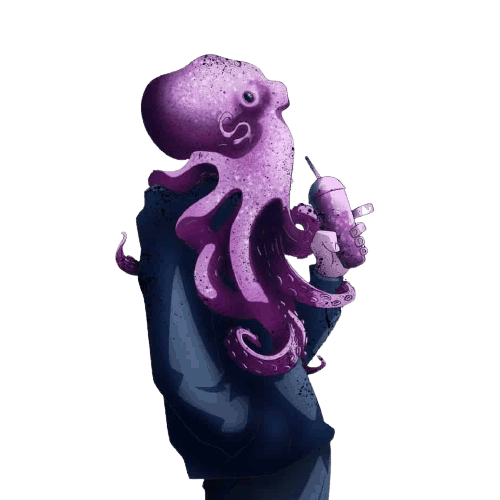
Mega Man: Fully Charged #2 Review
DISCLAIMER: Some of the links below are affiliate links. If you buy something from a link, we may earn a commission. This is used to help maintain the site and create more content for you!
Raise your hand: who picked up this comic book believing it to be a simple reimagining of Capcom’s video games and not the second season of a cartoon series? Now, raise your hand: who here even forgot they tried to make Mega Man into a shameless Shazam rip-off two years ago? What? Just me? I mean, both my hands are up at this point. It’s going to be hard to type this review going forward.
Now, first things first. The cover: amazing. So good in fact that it misled me into a sense of security. I thought I knew exactly what I was getting myself into. While it does show the show’s logo front and center, my eyes were more focused on the quasi-realistic rendition of Mega Man with Dr. Wily’s evil face behind him, reminiscent of the European cover for Mega Man’s first ever NES game.
I was ready to dive deep into what looked like a gritty reboot of the classic story of how a small blue robot shoots less powerful robots until peace is attained through acts of violence. I was ready to blast my way through this comic like Mega Man does with any foe that appears in his way.

About Mega Man #2
And then I crashed. On my own. As soon as I opened the first page, I got lunged head first into a hype wall that I had built for myself in mere seconds. Despite an expectation to see good old Bomb Man or Guts Man doing something fun in a different style, I was bombarded by images of a cyan and magenta war landscape featuring a Mega Man with Mega Man X armor and endless mentions of a “Hard Age”.
There was also some blood. Robot blood, but blood all the same. I wasn’t even finished uttering a mental question of “what the…?” when a 10-year old kid wakes up screaming from this nightmare and proceeds to runs to his dad: a man-bun-wearing Dr. Light caring for a dead miniature robot.
Ever seen that image of a cat with a loading circle pasted on its forehead? Yeah, that was me. But I soldiered on. This was Mega Man after all. Things would eventually make sense, I thought. It was at this point that the revelation that a buffed-up version of Mega Man 4‘s Skull Man was supposed to be the threatening villain of the story surfaced.
Wasn’t this the ridiculous looking robot master that stayed put as long as you did nothing but jump? The pushover with no real personality whose entire thing is “my head is a human skull despite being a robot”? That guy was now a mastermind of evil? That we were supposed to fear?
![Skull Man | Wiki | Megaman Amino [ES] Amino](https://pm1.narvii.com/6974/f4a00941145770b080a6087c66dadf6f33b2d17cr1-1000-379v2_hq.jpg)
And, yet, there’s still a bright red flying robot dog. Because that’s what adults want?
Was anything else weird? My question was answered a teenage angst about identity and parents not understanding you later. Enter Dr. Wily, a polka-dot-shirt-wearing historian that wants to befriend Mega Man in order to have him as the face of the robot uprising.
Something was not adding up. Where am I supposed to be?
Backstory time! Mega Man has been a part of my life ever since my grandfather gifted me a copy of Mega Man X for the SNES at some point in the 90’s. Back then I couldn’t put my finger on why but I became obsessed with the video game franchise. Whenever I was able to get online, I was using the primitive internet of that era to look up as much information and low-resolution images about Mega Man as I could. The obsession became so big, in fact, that for a couple of years my gamer tag and/or default RPG character name was Zero. I be basic.
My obsession came crashing down a few years later when my age added the “-teen” suffix to its numbers. Given the fact that everybody has to become a cringey adolescent at one time or another, there came a time I thought myself “too cool” or “too grown up” for childish things like Mega Man. It was around the time that Battle Network became a thing.
To describe it I remember using phrases such as “this new iteration is for kids” or “they don’t even know how the internet works, let alone how Mega Man plays.” As you can tell, I had very many a friend at this point of life. The life of the party – if I had been invited to one.

From then on, Mega Man transfixed from an obsession into a thing that existed on the periphery of my life. I still wanted to play the newer games, but I stopped myself from being excited about them and ready to disregard newer series as “gimmicks”.
For example, I wished I had a PS2 in order to complete the very-well-written saga of Mega Man X games – but forbade myself from getting any Battle Network cartridges for my GBA. I felt the necessity to acquire subsequent re-re-releases of Capcom’s Legacy Collection every time they came out – but Mega Man ZX would’ve been a waste of cash. I only accepted Mega Man’s classic forms as the only ones worth it.
As my YouTube algorithm showed back then, my late 20s saw me become a jaded adult that swears everything that came before was better and newer stuff lacks “substance” – whatever that means. Thank the gods this was an actual phase and not a default setting for the rest of my life or I would not be able to enjoy breathing anymore.
Just as I was discontinuing my transformation into boring old person stuck listening the same classic rock albums form the 70’s on repeat and plays nothing but NES emulation, Mega Man became a trending topic. Some designs had surfaced online depicting the blue bomber as an American-made hero. Apparently, a new TV show was in the works. And, despite the uproar, it looked alright – not impressive by all means, but Captain N this was not. The designs did not tickle any bones of mine but they were decent.
One thing was clear, though, as they were heavily influenced by Generator Rex and the likes, I knew I was so not in their target demographic. And that was alright. Another reason to shrug this cash-in effort off.

Mega Man #2 Review
Jump cut to a year later, when a trailer for this new TV show was dumped over Comic-Con attendees and then, subsequently, posted online for the entire internet to witness. As many people cringed and wrote lengthy comments on social media about how this iteration would destroy their childhoods – mostly people who believed Mega Man piqued when they were crushed to death by Light Man’s stage –, I found myself slightly interested in it. Not enough to actually watch it, mind you, but enough to remember this was a thing.
It’s been two years now and every memory of that show’s existence had been erased from my brain. I even read the entirety of Mega Man: Fully Charged #2 without even a clue that this was based on something other than the video games.
I had to Google some character names and plot points I just couldn’t wrap my head around while reading this to kickstart the memory that I had actually seen the trailer. As my opening paragraph spoiled: this is supposed to be the sequel of the now-cancelled TV show of the same name. A TV show I have not yet seen.
However, during the entire run of me reading this issue, my ears were ringing with dissonance buzz. It was very high-pitched, ear-blasting noise I was creating myself for myself. Was this gritty story focusing on teenage angst and themes such as war, betrayal or death really the same one as that blindingly-bright action cartoon? Did I miss something? Wasn’t part of the brief of the original series to be aimed at kids 6-11?
Not to brag about how utterly innocent my 8-year-old version was but “war” and “death” were two things I couldn’t even fit into a sentence at that age – I was too busy discovering the benefits of adding cheese to things.

There’s growing up with your audience and then there’s forcing your audience to accept how fucked up the world is in order to enjoy your media franchise.
In order to make sense of this whole debacle I had to look the ending of the actual cartoon with the hopes of understanding the chasm dividing the souls of the TV show and this comic book. YouTube is a very good library of specific clips as it turns out. Didn’t even had to scroll down.
And, sure enough, as I saw the final seven minutes of the series, it was exactly what the trailer had promised. The show ends with a bright action scene perfectly suited for a tv show for kids. The stakes were low for human standards, but high for children’s minds, there were explosions that merely bruised people, bad guys defeated via the power of friendship and family.
And it all was dressed with corny dialogue reminiscent of 80’s era Transformer episodes. It wasn’t spectacular by all means, but it was serviceable enough to create a fanbase out of it. It looked fun.

Which begs a repeat of my original question: why in God’s name is this comic book so gritty and angsty? Was it hard to capture the overly saturated feel of a CGI cartoon where tiny robots sputter one-liners every couple of minutes on printed pages? Because I’ve seen Gumball comics and they do that perfectly fine even when switching visual styles. It can be done.
Judged on its own merits, the comic book is alright. Just alright. There’s a sense of epicness splattered all over the pages, lens flares and dramatic Swedish close-ups included. The art style, an elongated sketch-like mixture of Tim Burton and CLAMP, is very fluent; full of Spider-Man-like poses of robots jumping from roof to roof or fighting each other.
I mean, yeah, everyone looks like they’re in their early 20’s despite the white hairs on their heads, but it’s not horrible looking. Besides, there’s a very good grasp of visual narration, what with composed images, interesting camera angles and coloring made by the gods themselves. Standard BOOM! Comics fare, all in all. Spectacular to look at and a joy to glide your eyes over each page.
That’s until you actually stop to focus on the lettering itself. Not the one inside the balloons, mind you, that’s perfectly fine, what with its manga-inspired font and the usual bold and italics to punctuate key words – we’ve seen it before and we know it works. It’s the words OUTSIDE of the balloons that are a problem. This series’ onomatopoeias suck so hard it’d take them one lick to get to the center of a Tutsi Pop.
It’d be one thing if they looked generic, but being this lackluster is an art in and on itself. You get the sense of an AI asking Word 95’s WordArt to design them in order to waste less of the editors’ time thinking on how to portray sound effects visually, but no AI would be this bad. Never have I ever seen such an anti-climactic explosion that takes up half of a page and has the body of an octogenarian flying through the air front and center.
The image is there, the implications and plot weight are there, but it’s the boring-ass “booom” pasted on top of it that ruins it. It feels like if someone lit a roman candle on a stage and everyone was too scared of it that they decided to rush to the nearest exits in order to avoid petite sparks and mildly annoying sounds.
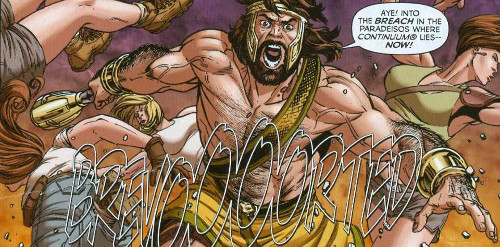
But it all pales in comparison to the story unfolding before us. Watching a rehash of Megatron and Starscream’s bouts for power during a brightly lit CGI-fest full of chibi characters is one thing. Having an entire comic book filled to the brim with the same twists and turns as the original Transformers cartoon but with gritty pseudo-realism is another completely.
Whatever magic there was with the cheesiness of such tired tropes has been diluted with the seriousness of early 2000s comic books this series is trying to achieve.
Worst of all, Mega Man: Fully Charged is one of those stories, where everything is presented like a complex political drama where loyalties are torn apart and played with, but where everything could’ve been solved by someone asking a single question. The entire plot hinges on someone not telling his own son a key-piece of information. People and robots die because one single human being couldn’t be bothered to simply ask again.
And, I must repeat, this collection of twists and turns meant to deliver the secrets of its main characters is the official sequel of a TV show that literally ended with a “it was your evil twin brother all along!” bit.
The dissonance created by this particular issue reaches FLAC-levels of bitrate. I don’t know who this is aimed at, who asked for this story to be told this way or why the tired trope of “make it mature” has not died after all this decades. Has that editorial decision ever made a comic book good?
This all feels like if the creative team behind the Dark Horse comics of Avatar: The Last Airbender were like “we could continue with the story of the show, you know, the feel and visuals of our source material… or we could make this a philosophical quander with heavy religious undertones that will leave everyone questioning their human worth just like Neon Genesis Evangelion! Yeah! That’ll be fun! That’s what the fans want!”

I mean, you can do it, I guess, the question is “why tho?”
Engage with the Creators
Stefan Simeone – Twitter | Instagram
Igor Monti – Twitter | ArtStation
Pick up Mega Man: Fully Charged #2

Pick up Mega Man: Fully Charged from your Local Comic Shop.
RELATED:
Read more Manga Books
Read more BOOM! Studios







